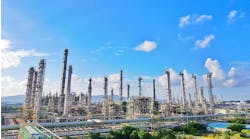The most challenging part of an energy management program is implementing energy savings measures. Several factors contribute to making this the toughest phase in energy management. First and foremost, the energy-savings project often has to compete with several other projects for a limited capital budget. Management's preference for process expansion over utility improvements, and lack of in-house expertise to implement and manage the project provide obstacles. Low energy costs and interference with other projects and processes also contribute to the challenge, but to a lesser extent. Whatever the reason, developing a systematic approach and proper planning can help overcome these challenges.
[pullquote]
The following 5-step approach could help engineers implement energy savings measures successfully.
Step 1: Classify the identified energy saving measures into short-, medium- and-long-term measures. Typical short-term measures include:
• Those that could be achieved with the existing capabilities, such as adjusting the excess air levels in boilers and furnaces, and lowering the air compressor discharge pressure where applicable.
• Measures with a simple payback period of less than one year, such as replacing defective steam traps, adding insulation to hot-surfaces, etc.
• Ones that arise from maintenance and housekeeping lapses, such as draining condensate due to pump failures, backpressure and water hammer issues.
Medium-term measures include:
• Additional retrofits, such as adding an automatic oxygen trim controller to a furnace.
• Simple payback periods ranging between 1 and 2½ years. For example, adding an economizer or air-preheater to a boiler.
• Some level of detailed engineering, such as adding new piping and pumping systems to improve condensate recovery.
Typical long-term measures include:
• Design changes, such as replacing a boiler or changing between hot-oil heating and steam-heating systems.
• Payback periods in excess of three years, such as changing from batch to continuous process.
• Detailed engineering and major process changes.
Step 2: Prioritize the classified measures with the following considerations:
• Ones that could fit into the annual development and maintenance budget.
• Those that don't require any plant shutdown or process stoppages.
• Measures critical to weather changes and environmental impacts.
• Ones that require special equipment and skilled resources.
• Those that could pose a risk to upstream and downstream processes.
Typically, short-term measures have the best cost-benefit ratio and fewer complications to contend with. Hence, they would be the obvious first choice for implementation. Also, short-term measures often bring quick results that could boost the confidence of everyone involved and lead to implementing additional energy-savings measures. Therefore, it's essential to share the positive results of these efforts. Slogans, stickers and small gifts to operators can help spread energy-efficiency awareness.
On some occasions, short-term measures don't require capital investment, but rather putting effort into changing the operating practices and the attitude of the plant personnel. In such a situation, convincing management alone may not suffice. To convince operators, explain the cost of energy losses rather than just issuing instructions to follow. Consider sending operators to external energy-management seminars and training to further boost awareness. Motivating the whole team on cost-conscious energy use is the most sustainable approach to an energy management program.
While Step 1 and Step 2 appear very general, their success determines the success of the whole program. As a result, these two steps must be planned carefully to ensure the success and sustainability of any energy-savings measures.
The three remaining steps — developing an implementation plan with a time-table, obtaining plan approval and organizing the needed resources, and implementing and establishing the results — will be covered in next month's column.
VEN V. VENKATESAN is Chemical Processing's Energy Columnist. You can e-mail him at [email protected]



